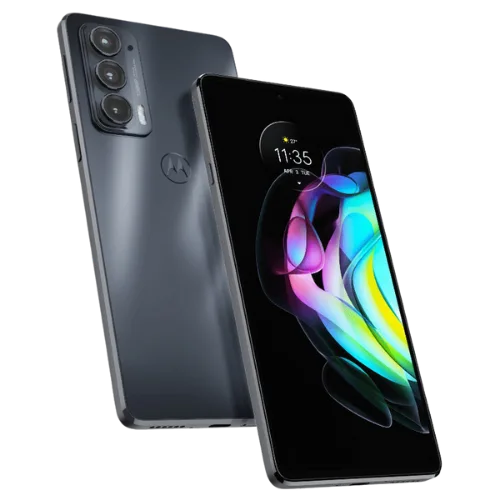Motorola Edge 20 review: Thin price meets slender body in a great handset
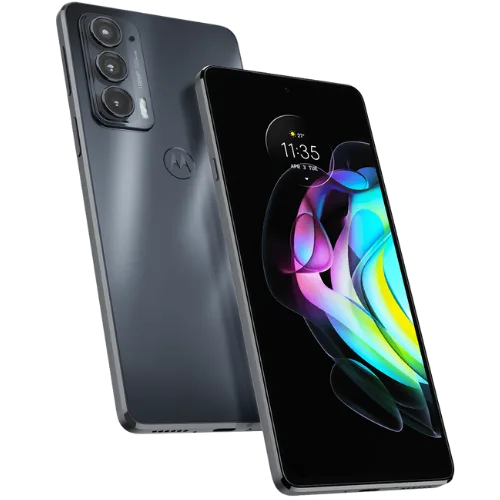
-
- Battery Score
- Camera Score
3.5
- Design Score
4
- Performance Score
4
- Battery Score
Summary
Quick verdict: The Motorola Edge 20 could do with a bigger battery, but it's otherwise a very nicely balanced mid-range phone that impresses with good design, solid app performance and varied camera capabilities.
- 144Hz capable display
- Good app performance
- Cameras mostly shoot well
- Fixed storage
- 144Hz isn't used by many apps
- Average battery life
- No water resistance
- No storage expansion
Details
Pricing & Availability
| RRP | $699 |
| Launch date | 09/2021 |
The Motorola Edge 20 is part of Motorola's new, slightly-more-premium-but-really-just-midrange Edge family of phones. It's a confusing family internationally with a whole lot of variance in different markets depending on feature set.
In Australia, the Motorola Edge 20 sits inbetween the more affordable Motorola Edge 20 Fusion and the higher-end Motorola Edge 20 Pro. That's often a position where the price compromise doesn't always live up or down to expectations, but with the Motorola Edge 20, it mostly hits exactly the right places.
That makes the Motorola Edge 20 a genuinely good phone, even in the highly competitive mid-range price space.
Design: Thin is in
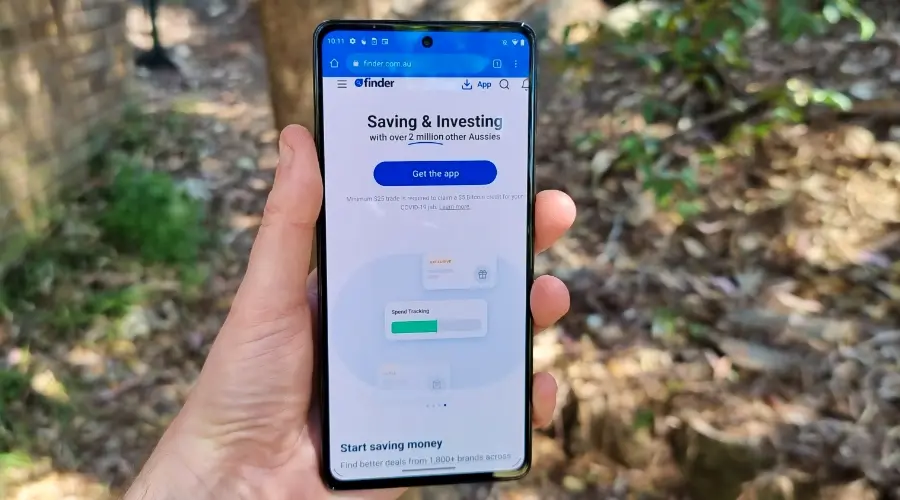
Image: Alex Kidman/Finder
The original Motorola Edge (https://www.finder.com.au/motorola-edge) got that name because of its curved display screen. Motorola's clearly had a long hard think about utility and what "Edge" might mean.
The Motorola Edge 20 doesn't have a curved display, swapping instead for a very thin, very light design that runs with a nearly bezel-free design. There's just thinnest sliver of black running around the front display.
Thin is very much the design standout of the Motorola Edge 20. It measures 163x76x6.99mm, and just a tad thicker with its included protective case installed.
You should always have a case on your phone, and that's especially true for the Motorola Edge 20. That's because while it's 6.99mm thin at the edges, the camera bump is quite noticeable. Even with the case fitted there's still enough of a bump left over to leave the Motorola Edge 20 as a phone that can never lie flat on its back. Without the case, it wobbles a lot on any flat surface.
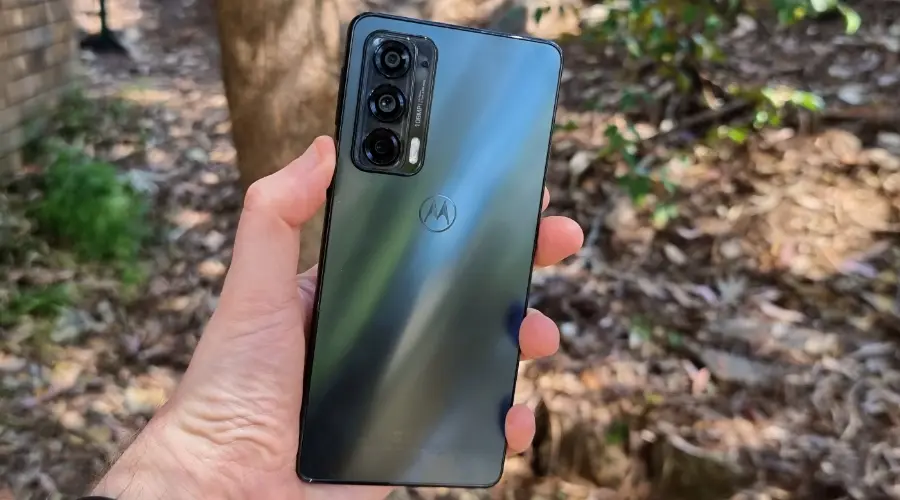
Image: Alex Kidman/Finder
The Motorola Edge 20's display is topped with a single holepunch camera. At first glance it might not seem like anything special on a $699 phone, but Motorola is pushing what's been offered in this price space. Specifically, it's a 6.7 inch FHD+ (2400x1080) pOLED screen with support for up to 144Hz refresh rates.
As a straight up number, 144Hz will resonate with the gaming crowd, although it does have some interesting limitations. Like so many other makes, 60Hz is set by default for a start. You can switch to fixed 144Hz, or opt for the Motorola Edge 20's auto mode that switches on the fly.
144Hz is nice and smooth of course, although you will pay a battery penalty for it. With gaming in mind, it's also worth noting that a number of high-end games still don't push up to 144Hz, and some older games that use refresh cycles in their programming may run oddly fast with that screen refresh rate in play.
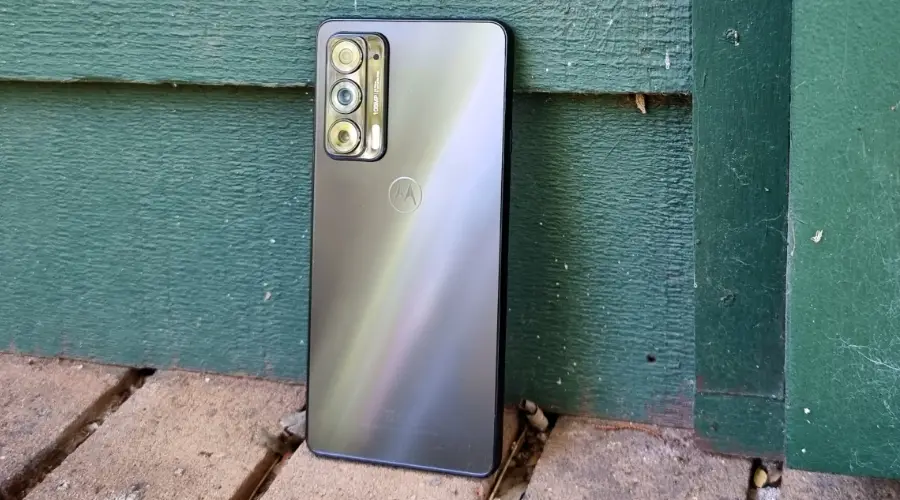
Image: Alex Kidman/Finder
In Australia the Motorola Edge 20 sells in a single colour called "Frosted Onyx". Yes, it's yet another silly way of saying "mostly black", although in some lighting situations you will get blue accents peeking through. It's pleasant enough, if a little basic. While it has a metallic shine to it, this is a purely plastic body handset.
The compromises here are that it's got no specifically IP rated water resistance, so getting it particularly wet would be a bad idea. While I'm on the rugged beat, it's also worth noting that the front display only uses Corning Gorilla Glass 3, putting it numerous generations behind the toughest glass you can get on a smartphone.
Camera: Triple camera flexibility
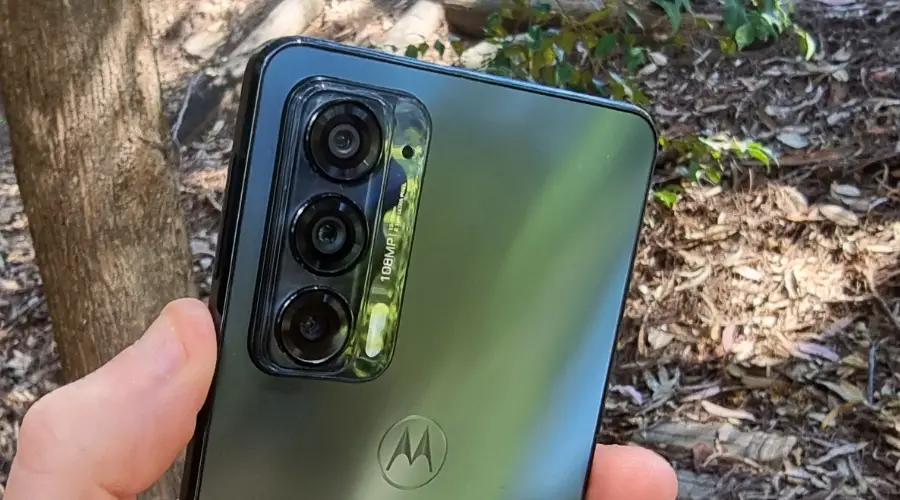
Image: Alex Kidman/Finder
Like the Motorola Edge 20 Fusion, the Motorola Edge 20 incorporates a 108MP f/1.9 primary rear sensor – the same one Samsung started using in 2020's Galaxy S20 handsets – as its big selling point in camera terms. What you get beside that is an 8MP f/2.4 3x telephoto lens and 16MP f/2.2 119 degree ultra-wide lens at the rear.
When it's time to point the camera at your own face, you'll be taking selfies with a single 32MP f/2.25 sensor, with AI taking the heavy lifting duties of creating bokeh focus effects.

Image: Alex Kidman/Finder
At the mid-range that's a decent array of camera choices to pick from. As with every phone we've seen with a high megapixel count, by default you're shooting with pixel binning enabled, meaning that you're actually taking 12MP shots with larger merged pixel sites for theoretically better light pickup.
That's something of a mixed story with the Motorola Edge 20, especially in low light. There are relatively few really great mid-range low light cameras, and the best of them tend to lean more heavily on AI interpretation than pixel binning to achieve their effects. That's what Google does with its Pixel 4a lines, for example.
Motorola doesn't have the sharpest track record in camera quality, but it's an area where it's obviously trying to improve matters. I'm always a big fan of phones that can shoot well while providing flexibility for different shooting types and that's something the Motorola Edge 20 can mostly handle. If you're shooting video you'll appreciate the tertiary microphone for audio zooming.
If you do need zoom, it's present, although predictably the jump from pure optical to digital can lead to jarring quality drops.
It's not a great photo, but here's my local shopping centre as seen through the primary 108MP lens. All is good so far.

Image: Alex Kidman/Finder
Switch to the 3x zoom, and it's still acceptable, although you can pick the colour and lighting differences from that lower grade optical sensor.

Image: Alex Kidman/Finder
Push the Motorola Moto Edge 20 to its maximum 30x digital zoom, and you're going to struggle to get anything worth sharing. Or in this case, anything vaguely resembling legible text.

Image: Alex Kidman/Finder
The Motorola Moto Edge 20 Pro gets an improved optical zoom, but within its price range the Motorola Edge 20 shoots quite well, especially considering Motorola's track record.

Image: Alex Kidman/Finder

Image: Alex Kidman/Finder

Image: Alex Kidman/Finder

Image: Alex Kidman/Finder

Image: Alex Kidman/Finder

Image: Alex Kidman/Finder
Performance: Snapdragon 778 impresses
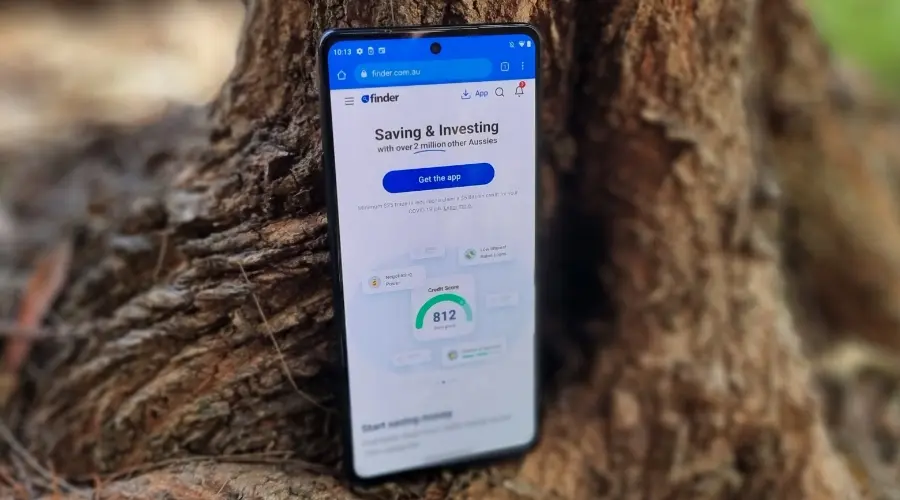
Image: Alex Kidman/Finder
The Motorola Edge 20 sits in the middle of the available Edge 20 family, underneath the more "premium" Edge 20 Pro but a hefty $200 more than the Edge 20 Fusion. For that money, you get a Qualcomm Snapdragon 778 processor paired up with 8GB of RAM and 128GB of fixed onboard storage. It's one of Motorola's design oddities that the cheaper Motorola Edge 20 Fusion and Motorola Moto G50 5G support microSD expansion, but if you opt for the more expensive Edge 20 phones you lose that functionality.
For the last 18 months or so the performance you can get out of a mid-range phone is more than enough for most user's everyday needs, and then some. While premium flagships do indeed have rockets strapped to them in performance terms, there's not that many apps that really push them hard enough to justify that.
The Motorola Edge 20 really does show how true this is. In everyday usage app performance and response is snappy, helped no doubt by that 144Hhz display response. It'll manage basic phone tasks with aplomb, as well as more intense applications such as gaming with few real issues.
Still, the mid-range market is a busy one, and you should try to ensure that you're getting the best performance you can for your money. To compare that we turn to more synthetic benchmarks. Here's how the Motorola Edge 20 compares against the rest of the Motorola Edge range and other phones in its rough price range in Geekbench 5's CPU test:
The Motorola Edge 20 relies on an Adreno 642L GPU for its pixel pushing power. Here's how it compares against those same handsets.
It's no surprise that the Motorola Edge 20 is outclassed by the Motorola Edge 20 Pro, because that's a much more expensive handset. Equally, there's just nothing to compare to the iPhone SE 2020 in this space for performance, although there you are compromising on camera features and battery life to a large extent.
Take those two phones out of the equation, and the Motorola Edge 20 compares really well. It shows precisely how it manages to provide such snappy performance, because it's got more than enough processing power to handle both essential and more demanding Android tasks.
As is usually the case with Motorola phones, the Android UI is only lightly tweaked from stock. That's absolutely my preferred method for Android phone makers, although long term Moto fans shouldn't stress about Moto Actions, because they're very much present. You can chop the phone through the air as much as you like to switch the flash on and off at will, for example. Although I did notice testing out the NordicTrack Commercial 1750 Treadmill that if I shifted my arms too much, I could enable that feature, so maybe take it easy if you plan to jog with the Motorola Edge 20.
The Motorola Edge 20 also supports Motorola's "Ready For" platform, its take on Miracast streaming of your Android screen to compatible wireless displays, as well as using the phone as a webcam on a Windows 10 PC or to quickly share files.
This gave me serious flashbacks, because Motorola trod this path a decade ago with its Atrix phones and laptop enclosure. The Atrix wasn't good, and I'm being polite here.
Ready For is better, but Motorola's idea that your phone is going to become your sole computer still doesn't stand up to serious scrutiny. Even on a decent mesh Wi-Fi connection, lag issues were common for complex content. Your experience may vary depending on your wireless tech, but in my testing while it was responsive enough for matters like quick photo sharing or if you wanted to show off an app on a display, I won't be replacing my laptop with it any time soon.
Your experience of this will vary of course depending on your wireless network's performance and your specific needs. It's not as though there aren't other ways to share your phone's content with others in any case.
Battery: Light phone comes with light battery life
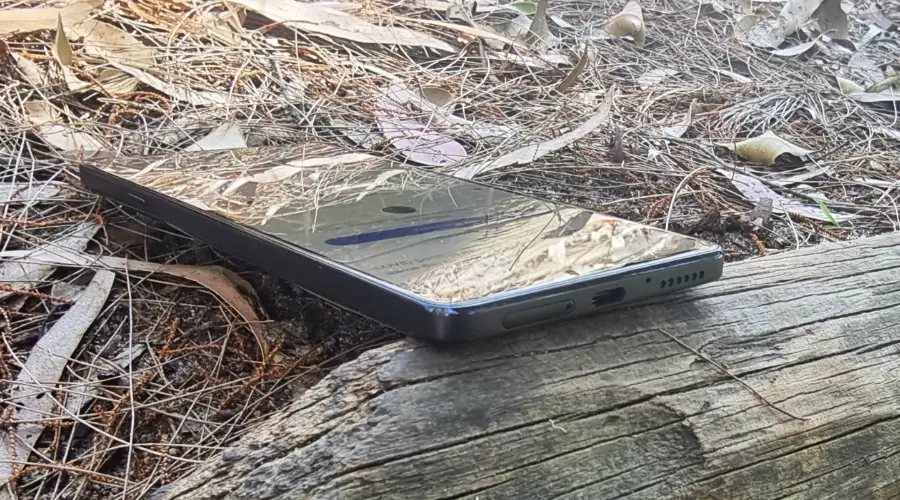
Image: Alex Kidman/Finder
At just 163g, the Motorola Edge 20 is very light and comfortable in the hand, but that comes with a cost. One of the key ways a phone's weight is kept low and its profile slim is by slimming down its battery capacity. That's precisely what Motorola's done with the Motorola Edge 20, fitting it out with a 4,000mAh battery. It's the smallest battery in any phone in the local Edge 20 family. Combining that with a battery sucking 144hz display gave me serious concerns about its overall battery endurance.
4,000mAh is terrible – the iPhone SE 2020 would kill for a 4,000mAh battery – but it's on the lower side. Rather predictably, in our standard battery test, the Motorola Edge 20 did not compare well. That test involves streaming a 1080p video at full brightness and moderate volume from a full battery. Phones that can tend to last more than a day hit over the 90% remaining mark at an hour's testing time.
Here's how the Motorola Edge 20 compares:
That 90% score is not great. It's precisely on the cusp of where a phone may struggle to get through a full day's work. As with any phone if you drop heavy apps onto it constantly you can drain it faster, and if your use is moderate you can get more use out of it.
Anecdotally, the Motorola Edge 20 actually performed a little better than its benchmark scoring would suggest, but on days when I was testing out 5G or using it more consistently, it was definitely starting to struggle by the end of the day. Motorola's claim is for "all-day battery life", and if you're careful that's true, but it's not a star performer in this respect.
Recharging the Motorola Edge 20 is via USB-C only with a 30W charger supplied in the box, so it's at least easy to top it up with power as needed.
Should you buy the Motorola Edge 20?
- Buy it if you want one of the best mid-range phones available right now.
- Don't buy it if you need hefty battery life or more storage.
The Motorola Edge 20 could have been one of those classic "middle" phones in a range that are neither cheap enough to be compelling nor powerful enough to be worthwhile. Instead, it treads that middle ground deftly, providing plenty of processing power, interesting cameras and a nice thin design that has plenty of appeal. It steps well above what the Motorola Edge Fusion is capable of, while shaving a welcome quantity of cost away from the Motorola Edge 20 Pro.
If you're looking for reviews of the other current Motorola Edge 20 phones for comparison, we have tested the Fusion Edge 20 and the Edge 20 Pro.
And if you're after something cheaper we have also tested the Motorola Moto G50 5G.
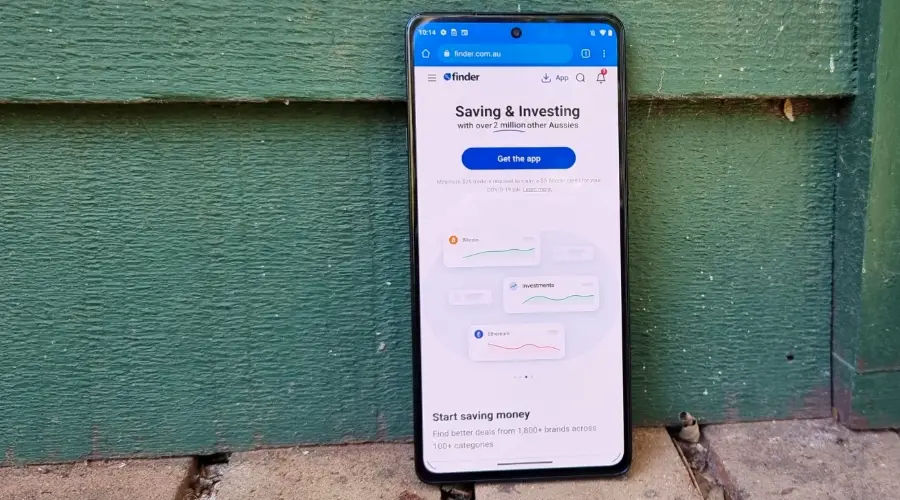
Image: Alex Kidman/Finder
Pricing and availability
How we tested:
The Motorola Edge 20 was tested over a two week period, taking into account its application performance, design quality, camera features and battery life.
Specifications
Display
Camera
Physical Dimensions
Connectivity
Power, storage and battery
Device features
Images: Alex Kidman
More Finder reviews
-
Why I keep coming back to Google’s Pixel Watch 4 (you might disagree)
17 Dec 2025 |
-
The Pixel 10 is the perfect phone for everyday use – here’s why
16 Dec 2025 |
-
Apple iPhone 17 review – Is it the phone of the year?
16 Dec 2025 |
-
iPhone Air review – It’s not what I expected
12 Dec 2025 |
-
iPhone 17 Pro and Pro Max review – At their peak
30 Oct 2025 |
Sources
Your reviews
Alex Finder
Senior editor
You are about to post a question on finder.com.au:
- Do not enter personal information (eg. surname, phone number, bank details) as your question will be made public
- finder.com.au is a financial comparison and information service, not a bank or product provider
- We cannot provide you with personal advice or recommendations
- Your answer might already be waiting – check previous questions below to see if yours has already been asked
Finder only provides general advice and factual information, so consider your own circumstances, or seek advice before you decide to act on our content. By submitting a question, you're accepting our Terms Of Service and Finder Group Privacy & Cookies Policy.
This site is protected by reCAPTCHA and the Privacy Policy and Terms of Service apply.

